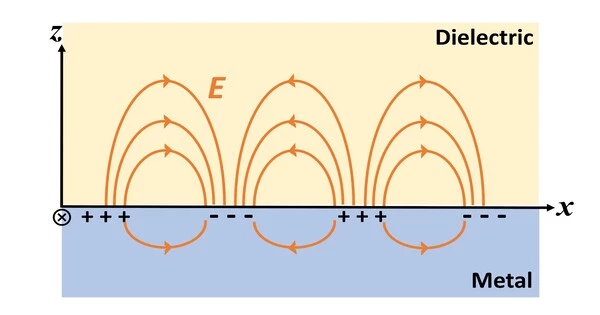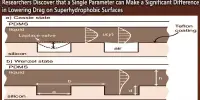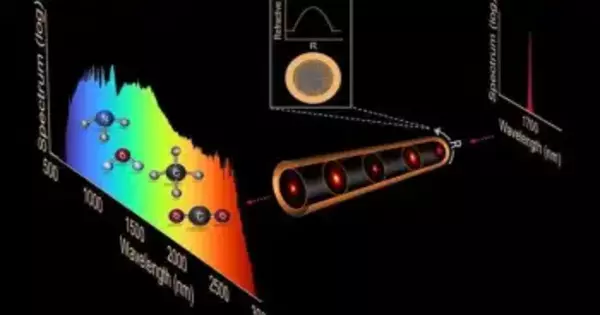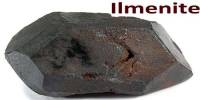Surface plasmon polaritons (SPPs) are electromagnetic waves that travel in the infrared or visible ranges along a metal-dielectric or metal-air interface. These are electromagnetic waves that travel along the interface of a metal and a dielectric. The term “surface plasmon polariton” describes a wave that involves both charge motion in metal and electromagnetic waves in air or dielectric (“polariton”). They are hybrid modes formed by the interaction of electromagnetic waves and collective oscillations of free electrons at the metal-dielectric interface.
When light interacts with a metal-dielectric interface, the incident light’s electric field can couple with the metal’s free electrons, causing them to oscillate collectively. A surface plasmon is a collective oscillation that can propagate along the interface. A surface plasmon polariton is a resulting wave, which is a combination of an electromagnetic wave and a surface plasmon.
They are a type of surface wave that can be guided along an interface much like light can be guided by an optical fiber. SPPs have a shorter wavelength than light at the same frequency (photons) in vacuum. As a result, SPPs can have greater momentum and local field intensity. They have subwavelength confinement perpendicular to the interface. An SPP will travel along the interface until its energy is lost due to metal absorption or scattering in other directions.
SPPs have unique properties that make them useful for various applications in optics and photonics. Some of the key characteristics of SPPs include:
- Subwavelength confinement: SPPs can be tightly confined to the metal-dielectric interface, allowing for the manipulation and control of light on subwavelength scales. This confinement enables the study of phenomena that are not easily accessible with conventional optics.
- Strong field enhancement: SPPs can concentrate electromagnetic fields at the metal-dielectric interface, leading to enhanced light-matter interactions. This property is beneficial for applications such as surface-enhanced spectroscopy and sensing.
- Long propagation length: SPPs can propagate for relatively long distances along the metal-dielectric interface with minimal loss, especially at specific wavelengths and under certain conditions. This property is crucial for the development of plasmonic waveguides and integrated photonic circuits.
- Dispersion properties: The dispersion relation of SPPs determines their wavelength-dependent behavior. The dispersion relation is influenced by factors such as the metal’s properties, the dielectric medium, and the geometry of the interface. By engineering these parameters, the dispersion properties of SPPs can be tailored for specific applications.
The use of SPPs extends the diffraction limit of subwavelength optics in microscopy and photolithography. It also allows for the first steady-state micro-mechanical measurement of a fundamental property of light: photon momentum in a dielectric medium. Photonic data storage, light generation, and bio-photonics are some of the other applications.
















